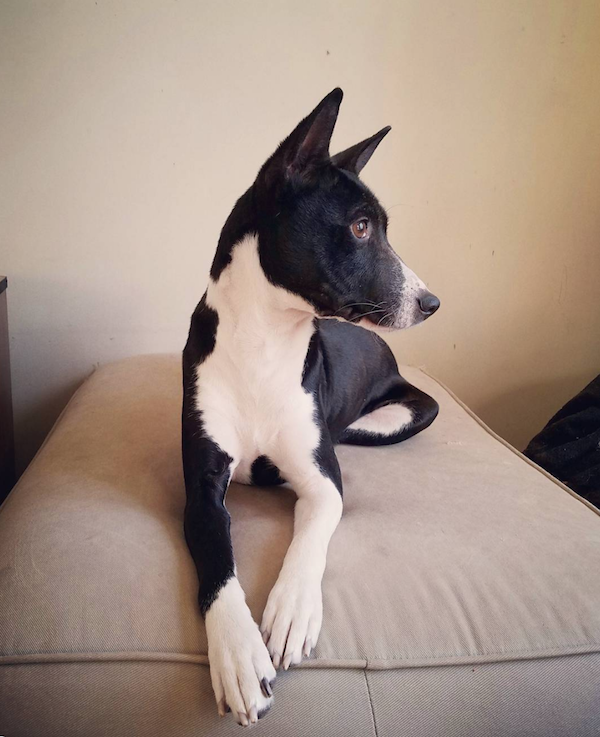
Heads matter, even for dogs that aren’t “head breeds.”
The Basenji, we think, has a lovely headpiece critical to its breed type, and in no small way, carriage is a big part of it. Admittedly, we are a sample of just one, but we’ve never seen a Basenji that didn’t carry his head proudly on a well arched neck. This bearing makes short work of spotting a well chiseled, medium width skull that is never domed or peaked.
The muzzle is shorter than the skull, but it should never be too short because the curvature of the cheek bones (aka the zygomatic arches) that are intended to protect the eyes typically go with cheekiness and a broad head, and both are undesirable. If the head is too broad, it will lack the all important wrinkling that is indicative of loose skin.
Loose skin isn’t just important to expression (of which the Basenji has an entire repertoire), but it serves a purpose. Remember the environment of this dog’s native country, and the dog’s purpose. This is a hound that plows through dense jungle in which thorny bushes, prickly vines and spike plants grow. Tight skin would easily tear, but loose, pliable skin “gives” as the dog crashes through. Accordingly, a lack of wrinkling is to be penalized as it is atypical of the breed. That said, coarse or heavy wrinkling found in breeds like the Bloodhound or Neapolitan Mastiff should also be penalized in a Basenji as it would hide the fine chiselling of the head.
Another large part of breed expression are the ears. Smallish, erect, and hooded ever so slightly, their tips should be nearer to the middle of the skull than the outside edge (in fact, we read somewhere that a Basenji with ears that are too small hasn’t been born yet). Anything less gives the breed a completely different look, and were the head too wide or “cheeky,” those ears would typically be heavy, wide set, and big. So not Basenji.
Needless to say, much of the dog’s expression comes from the eyes which should be obliquely set, smaller than large, dark brown or dark hazel, and alive with curiosity and kindness.
Perhaps our favorite part of the Basenji face are the “cushions,” fatty whisker pads on the muzzle. In our view, they keep the face soft and prevent it from looking like the working end of a pencil. A Basenji’s muzzle should be softly rounded, and not sharp or pointed. We happen to think it’s also a wonderful spot on which to plant a kiss. Just saying.
Image: CH Kasendo Melar Heart Like Mine, aka “Mia,” shared with consent from the owner and photographer,
Melody Falcone, MFDesign

Young Basenji puppies have more forehead wrinkles than adults do, giving them a very “worried” expression. Too cute!